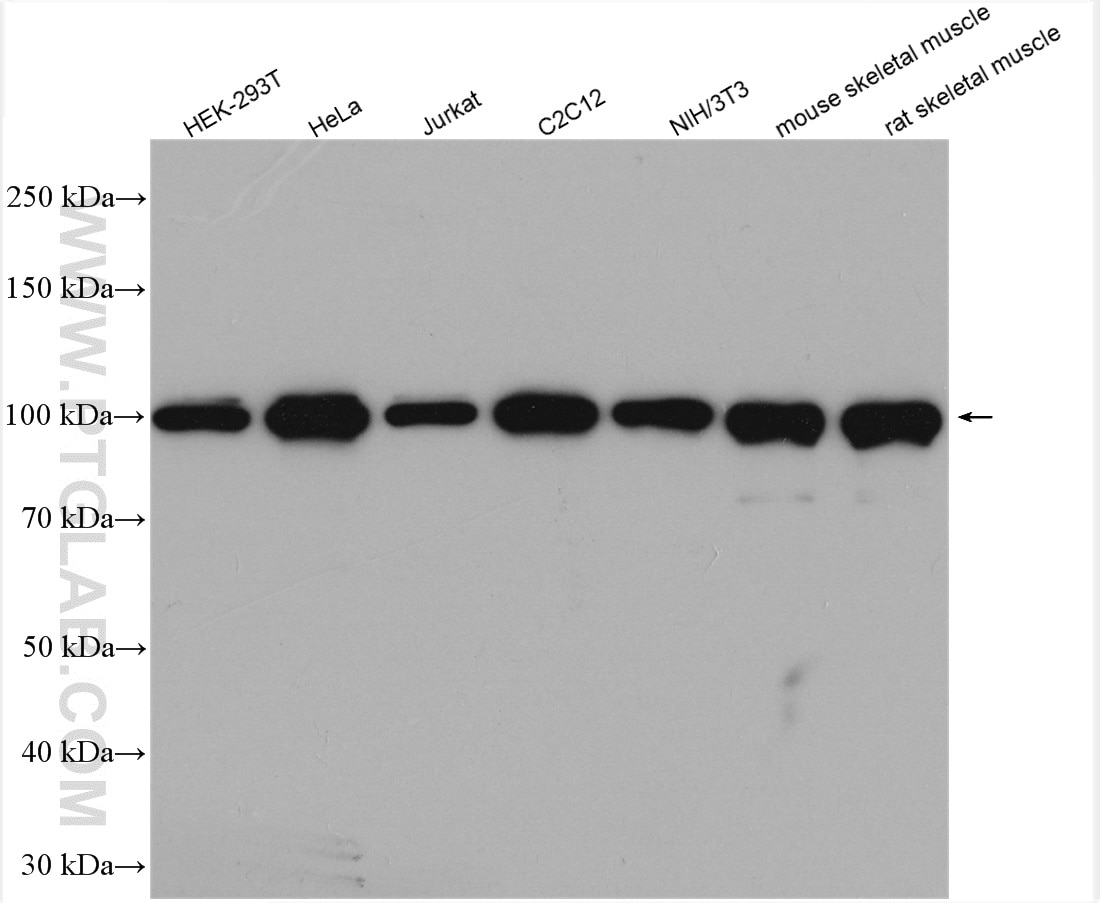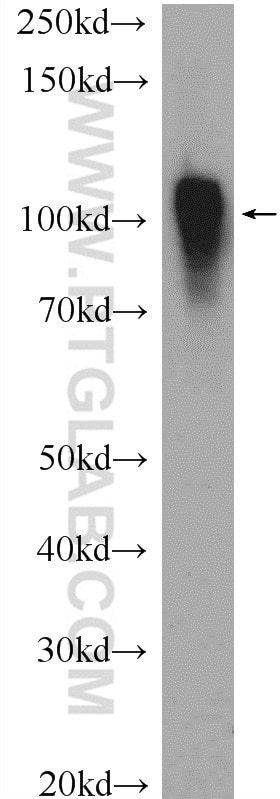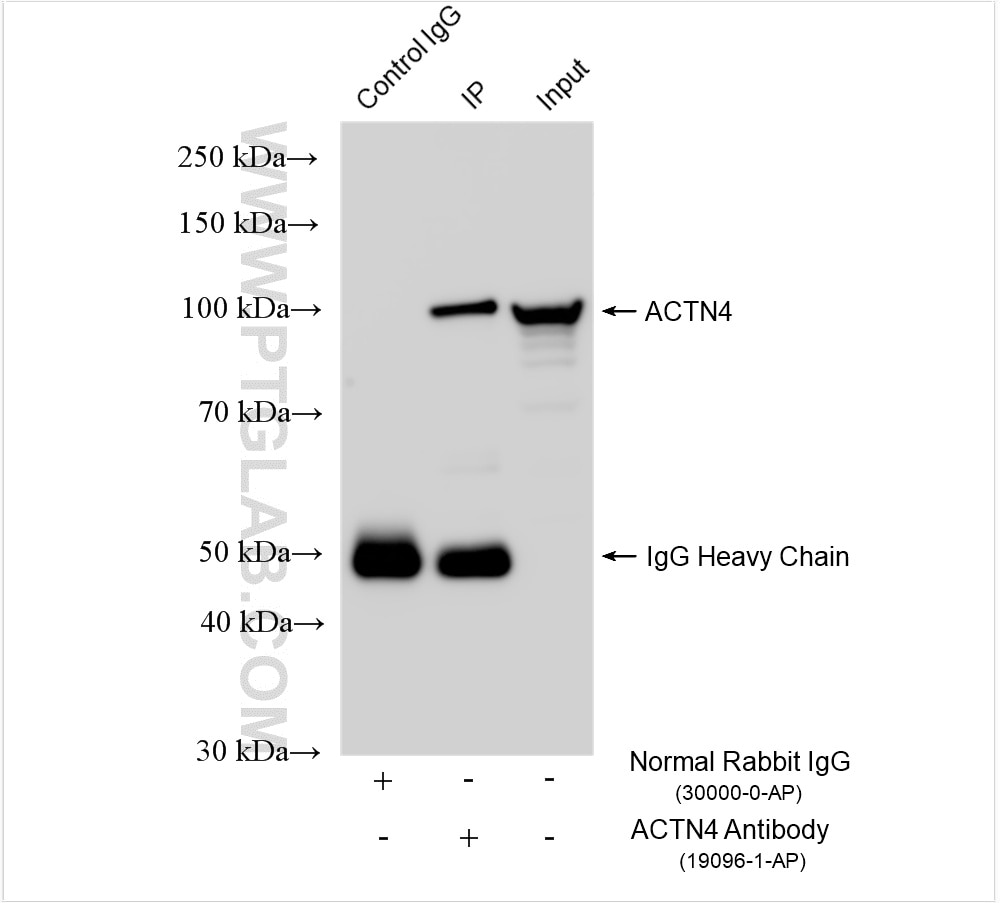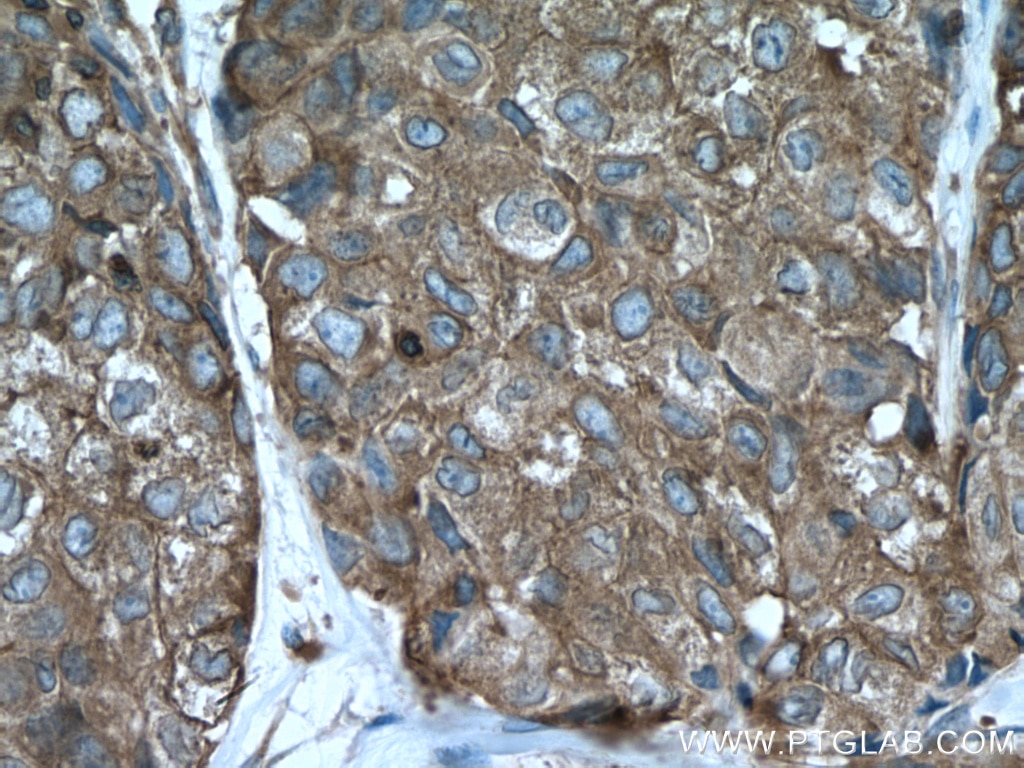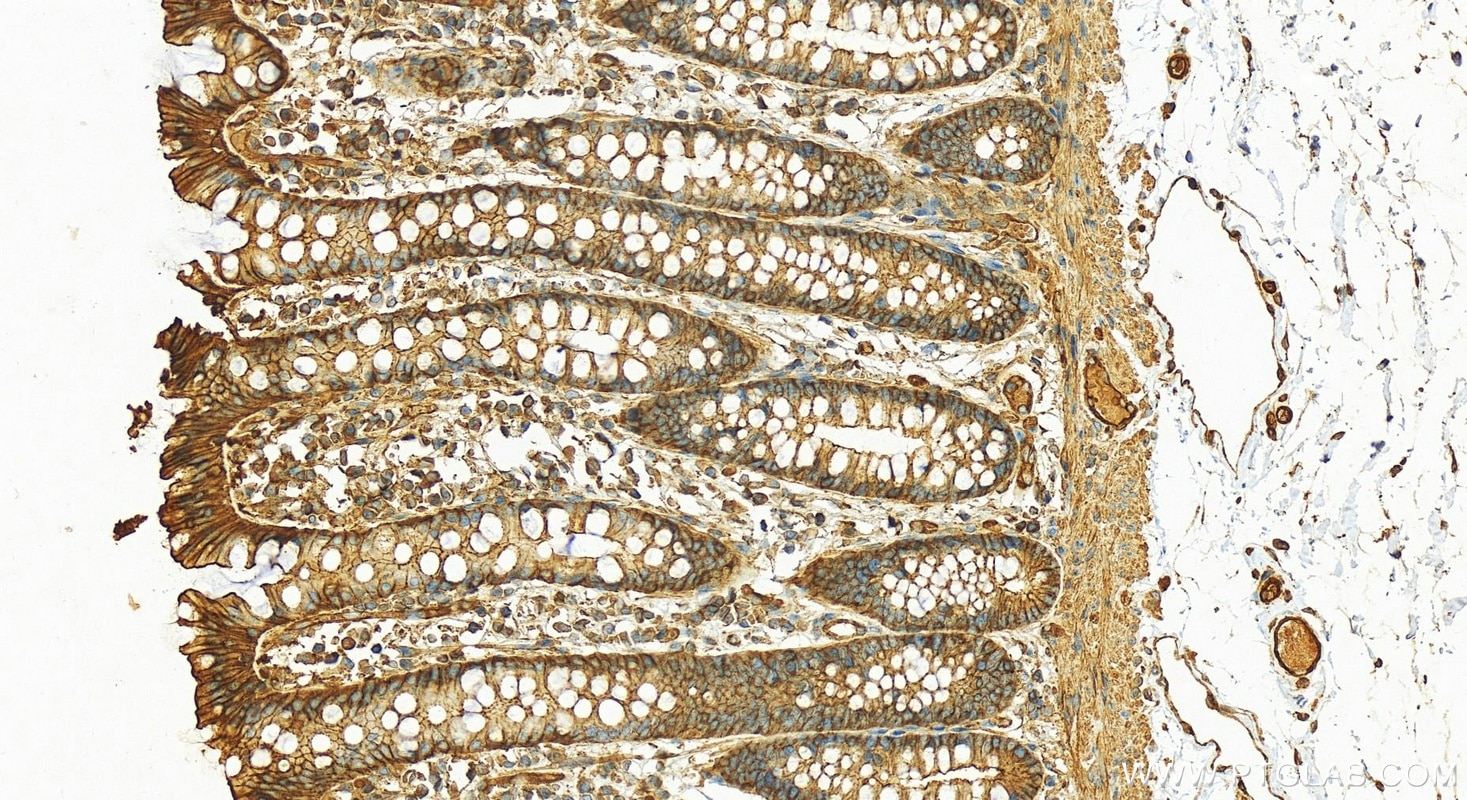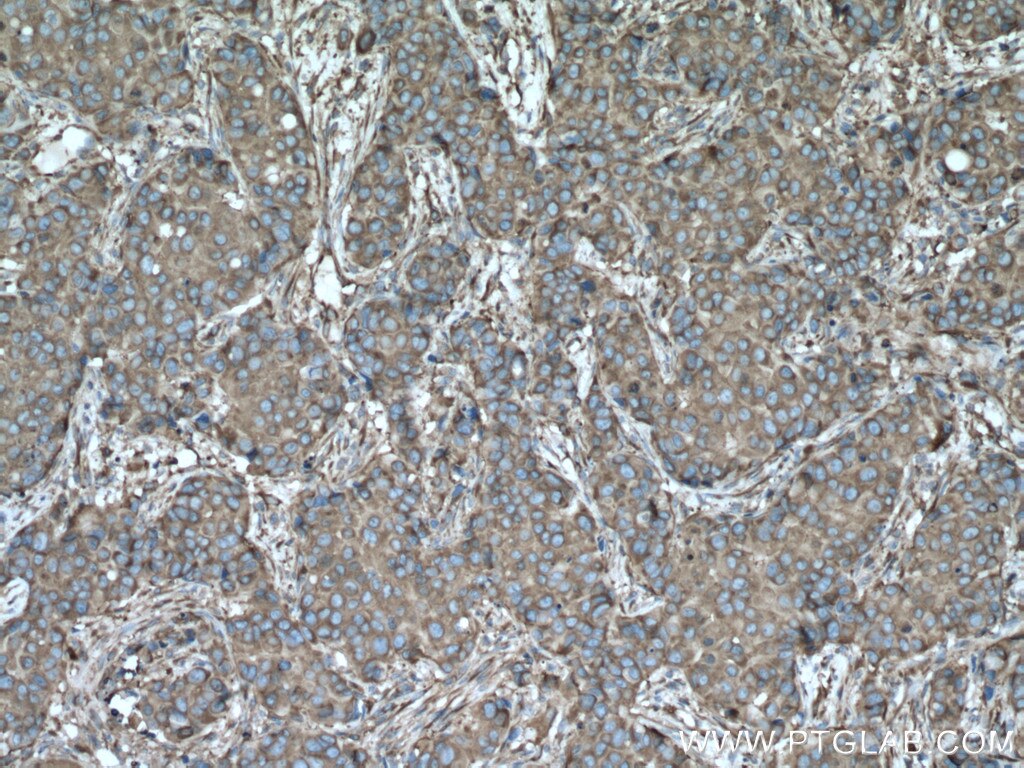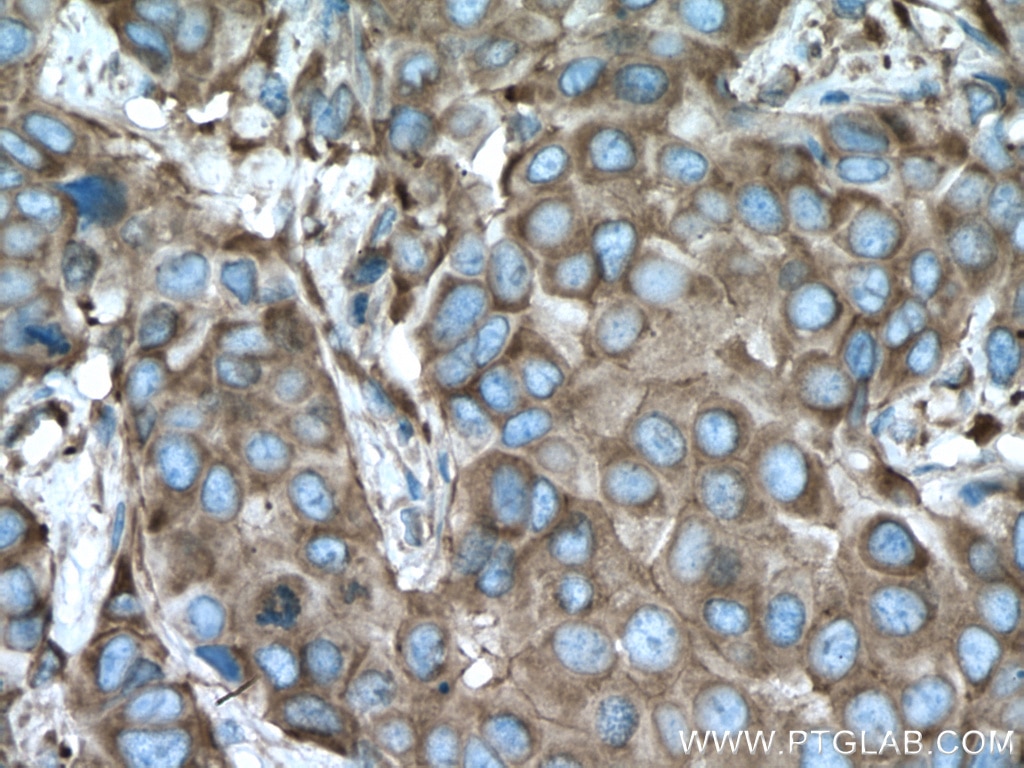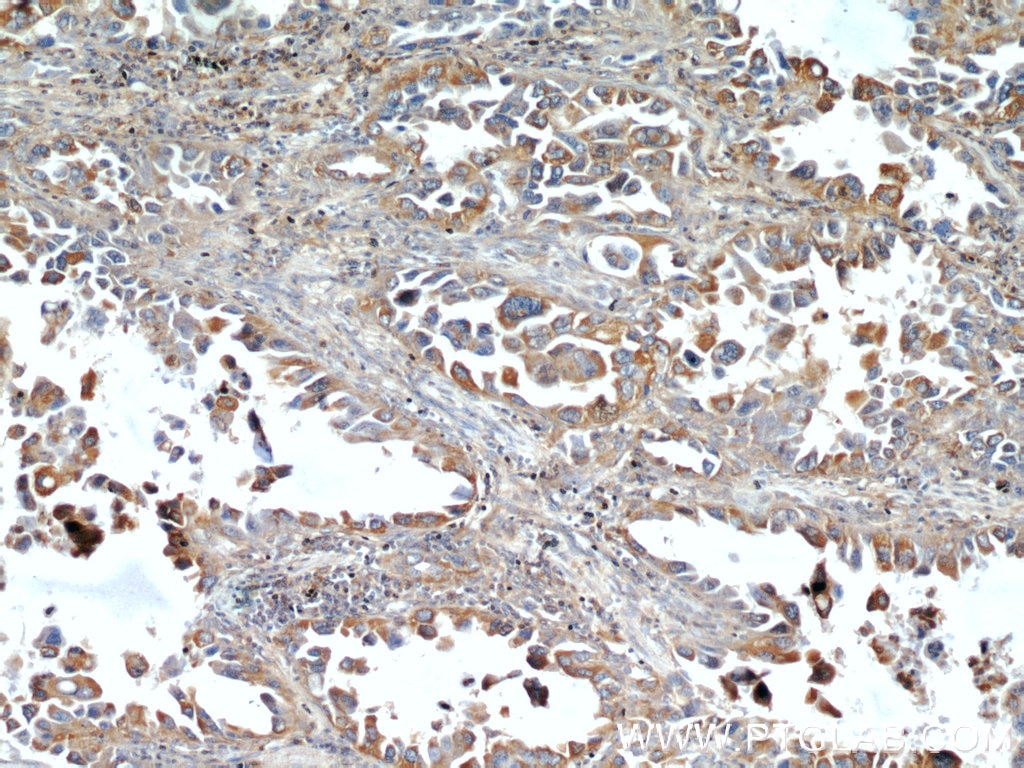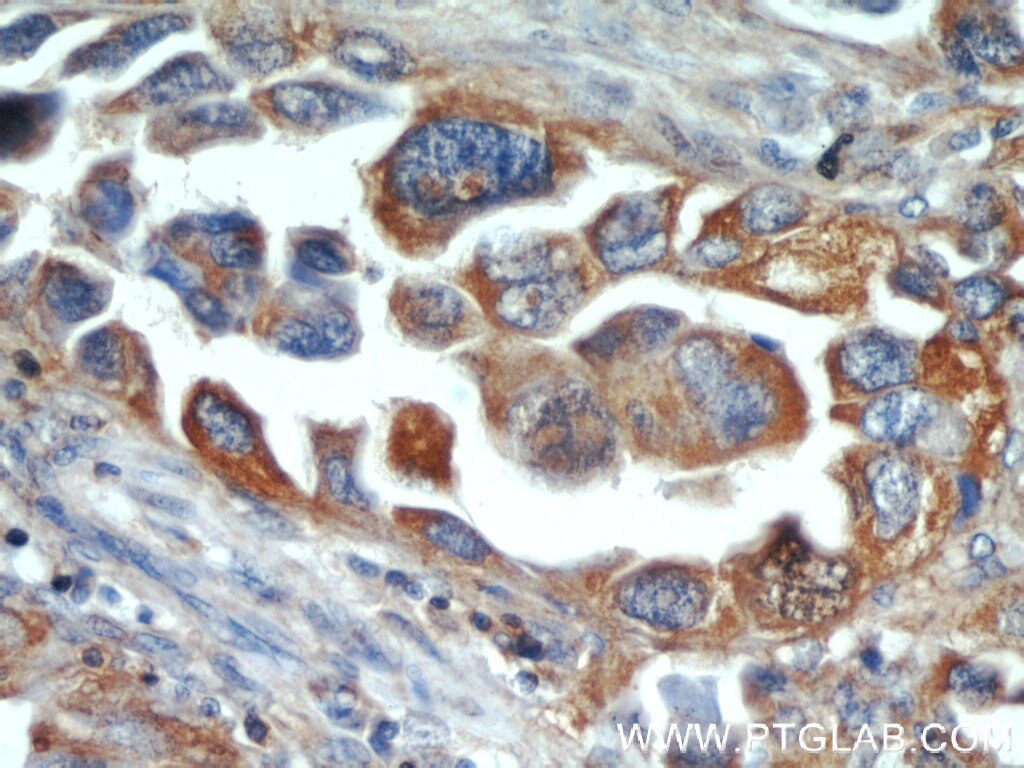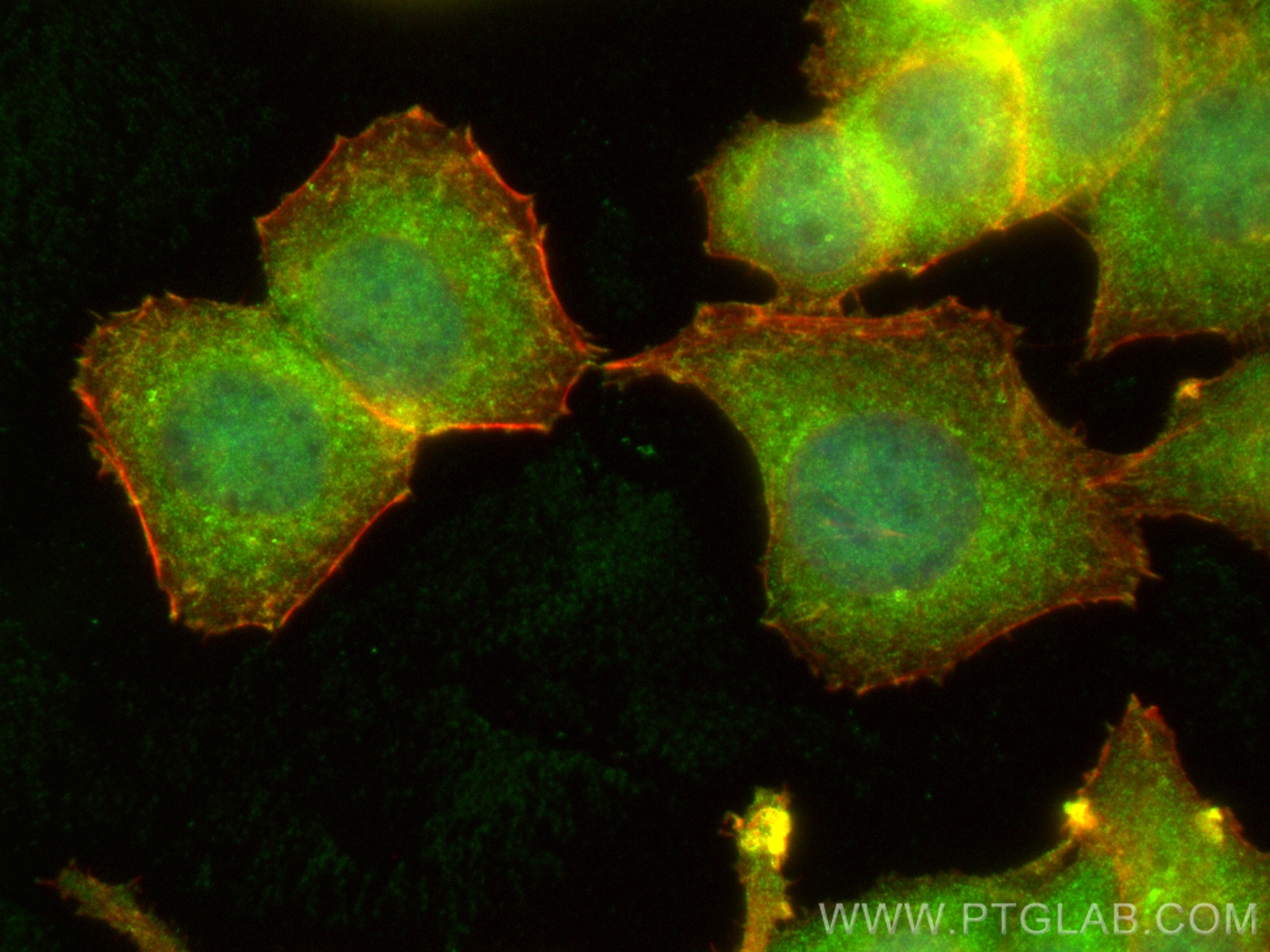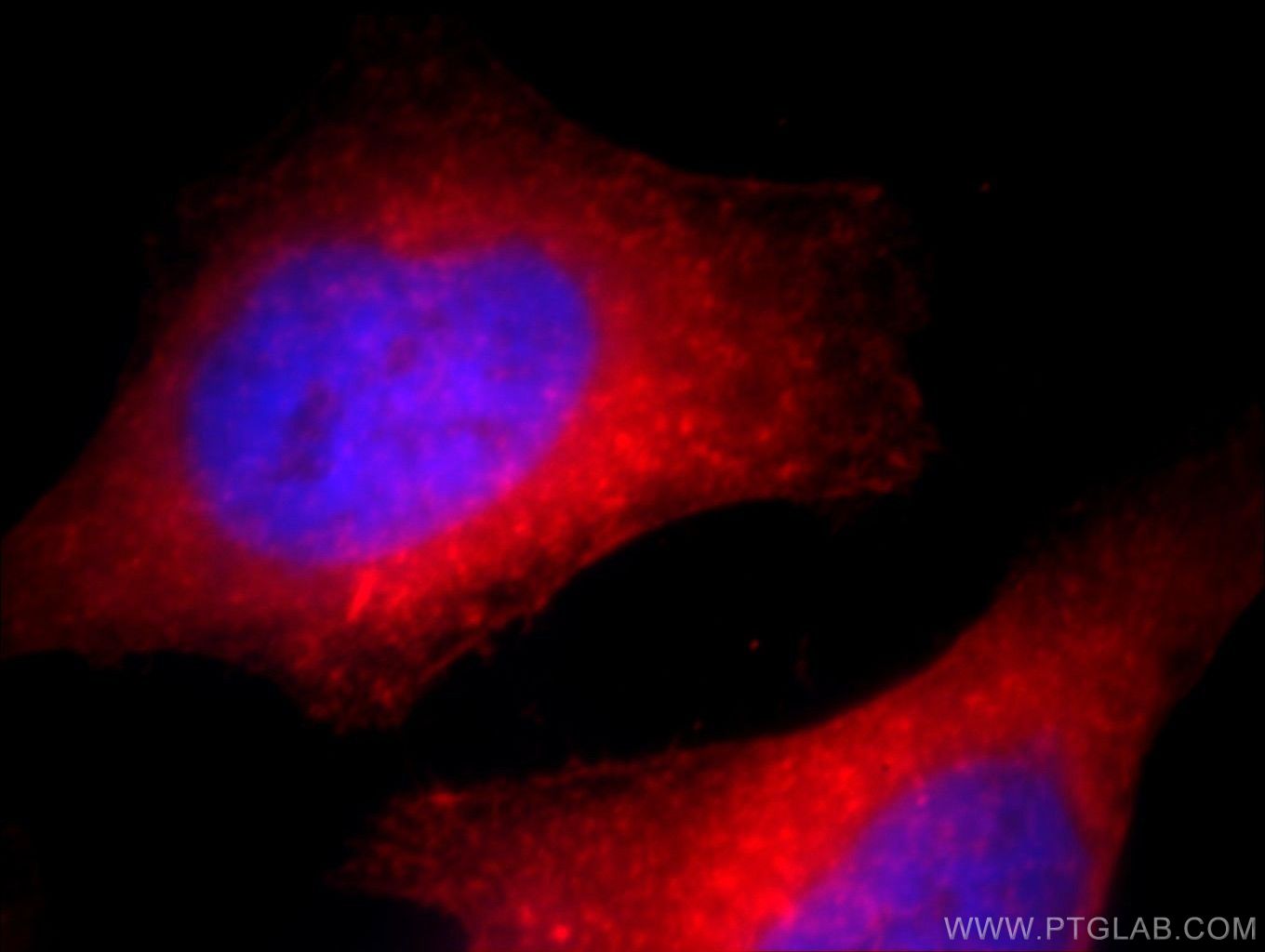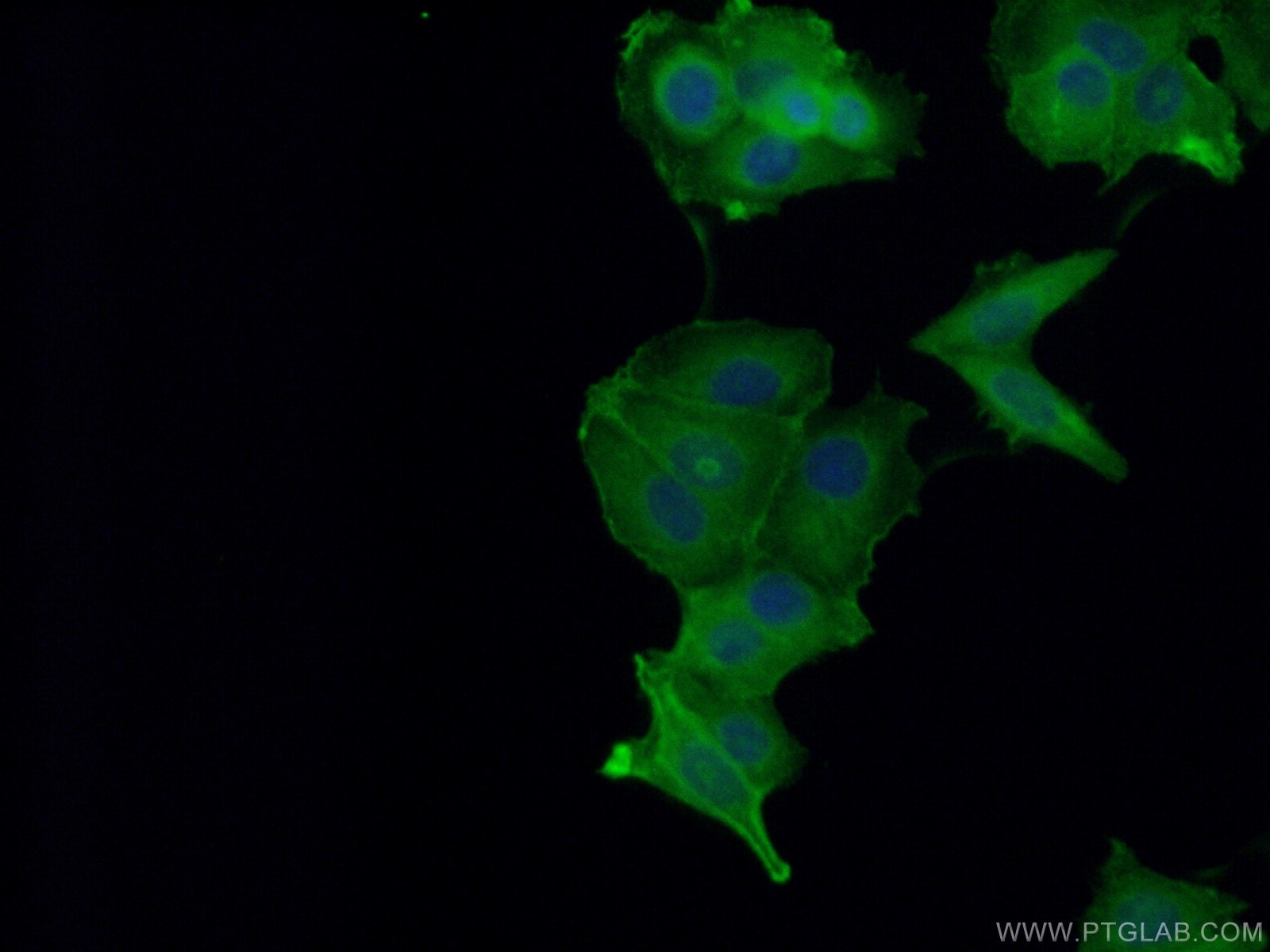- Featured Product
- KD/KO Validated
ACTN4 Polyklonaler Antikörper
ACTN4 Polyklonal Antikörper für WB, IHC, IF/ICC, IP, ELISA
Wirt / Isotyp
Kaninchen / IgG
Getestete Reaktivität
human, Maus, Ratte und mehr (1)
Anwendung
WB, IHC, IF/ICC, IP, CoIP, ELISA
Konjugation
Unkonjugiert
Kat-Nr. : 19096-1-AP
Synonyme
Geprüfte Anwendungen
| Erfolgreiche Detektion in WB | HEK-293T-Zellen, C2C12-Zellen, HeLa-Zellen, Jurkat-Zellen, Mauslebergewebe, NIH/3T3-Zellen |
| Erfolgreiche IP | HeLa-Zellen |
| Erfolgreiche Detektion in IHC | humanes Kolongewebe, humanes Mammakarzinomgewebe, humanes Lungenkarzinomgewebe Hinweis: Antigendemaskierung mit TE-Puffer pH 9,0 empfohlen. (*) Wahlweise kann die Antigendemaskierung auch mit Citratpuffer pH 6,0 erfolgen. |
| Erfolgreiche Detektion in IF/ICC | MCF-7-Zellen, HeLa-Zellen |
Empfohlene Verdünnung
| Anwendung | Verdünnung |
|---|---|
| Western Blot (WB) | WB : 1:5000-1:50000 |
| Immunpräzipitation (IP) | IP : 0.5-4.0 ug for 1.0-3.0 mg of total protein lysate |
| Immunhistochemie (IHC) | IHC : 1:2500-1:10000 |
| Immunfluoreszenz (IF)/ICC | IF/ICC : 1:200-1:800 |
| It is recommended that this reagent should be titrated in each testing system to obtain optimal results. | |
| Sample-dependent, check data in validation data gallery | |
Veröffentlichte Anwendungen
| KD/KO | See 4 publications below |
| WB | See 21 publications below |
| IHC | See 4 publications below |
| IF | See 12 publications below |
| IP | See 1 publications below |
| ELISA | See 1 publications below |
| CoIP | See 2 publications below |
Produktinformation
19096-1-AP bindet in WB, IHC, IF/ICC, IP, CoIP, ELISA ACTN4 und zeigt Reaktivität mit human, Maus, Ratten
| Getestete Reaktivität | human, Maus, Ratte |
| In Publikationen genannte Reaktivität | human, Hund, Maus, Ratte |
| Wirt / Isotyp | Kaninchen / IgG |
| Klonalität | Polyklonal |
| Typ | Antikörper |
| Immunogen | ACTN4 fusion protein Ag13546 |
| Vollständiger Name | actinin, alpha 4 |
| Berechnetes Molekulargewicht | 105 kDa |
| Beobachtetes Molekulargewicht | 100-105 kDa |
| GenBank-Zugangsnummer | BC005033 |
| Gene symbol | ACTN4 |
| Gene ID (NCBI) | 81 |
| Konjugation | Unkonjugiert |
| Form | Liquid |
| Reinigungsmethode | Antigen-Affinitätsreinigung |
| Lagerungspuffer | PBS with 0.02% sodium azide and 50% glycerol |
| Lagerungsbedingungen | Bei -20°C lagern. Nach dem Versand ein Jahr lang stabil Aliquotieren ist bei -20oC Lagerung nicht notwendig. 20ul Größen enthalten 0,1% BSA. |
Hintergrundinformationen
ACTN4 (alpha actinin 4) is a ubiquitous actin-binding protein that cross-links actin filaments into bundles to form filopodia, and has a crucial role in cytoskeletal organization. ACTN4 is colocalized with actin stress fibers and is dispersed in the cytoplasm and in the nucleus. Increased levels of ACTN4 have been associated with cancer metastasis, indicating its implication in cancer cell migration and metastasis. Defects in ACTN4 cause glomerular disease. This antibody recognizes 100-105 kDa of endogenous ACTN4 protein in various lysates. (22370640, 10700177)
Protokolle
| PRODUKTSPEZIFISCHE PROTOKOLLE | |
|---|---|
| WB protocol for ACTN4 antibody 19096-1-AP | Protokoll herunterladen |
| IHC protocol for ACTN4 antibody 19096-1-AP | Protokoll herunterladenl |
| IF protocol for ACTN4 antibody 19096-1-AP | Protokoll herunterladen |
| IP protocol for ACTN4 antibody 19096-1-AP | Protokoll herunterladen |
| STANDARD-PROTOKOLLE | |
|---|---|
| Klicken Sie hier, um unsere Standardprotokolle anzuzeigen |
Publikationen
| Species | Application | Title |
|---|---|---|
J Thorac Oncol Alpha-actinin 4 is Associated with Cancer Cell Motility and is a Potential Biomarker in Non-Small-Cell Lung Cancer. | ||
Oncogene KLF5 regulates actin remodeling to enhance the metastasis of nasopharyngeal carcinoma | ||
Cancer Immunol Immunother Circulating PD-L1 is associated with T cell infiltration and predicts prognosis in patients with CRLM following hepatic resection. | ||
Sci Rep Poly-L-ornithine enhances migration of neural stem/progenitor cells via promoting α-Actinin 4 binding to actin filaments. | ||
J Cell Sci GIPC3 couples to MYO6 and PDZ domain proteins and shapes the hair cell apical region |
